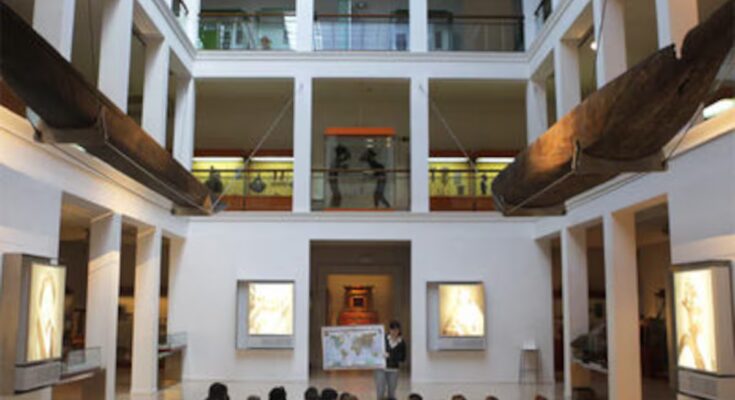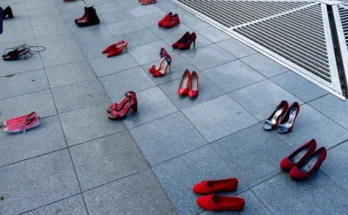The decolonization project of the museums of Anthropology and America enters its next phase. The work of the two expert committees created by Ernest Urtasun, Minister of Culture, to “overcome and question the Eurocentrism” of these two institutions, concluded after six months of work with the delivery of two projects with specific guidelines to renew the museographic discourses of these institutions. That is, including an anti-racist, gender perspective, equipped with social justice and capable of eliminating all the prejudices with which until now these centers have described a continent and a part of the history of humanity, as stated in the proposals. The reports do not ignore, therefore, any of the terms that have entered into debate, if not partisan conflict, since the Minister of Culture announced almost two years ago his intention to “overcome a colonial framework or one anchored in gender or ethnocentric inertia” for state museums.
Presenting the projects this Wednesday in Madrid, Urtasun underlined that “the objective is that national museums are children of the present and builders of the future. They will explain cultures as something alive and contemporary, which challenges us. And we will also recognize the action of indigenous peoples”.
The expert commissions presented their conclusions at the end of 2024 and since the beginning of this year the museums, in collaboration with Culture, have finalized two projects which will be put out to tender starting in December for 4.4 million euros, for Anthropology; and in 2026 for 9.2 million, for America. The forecast is that the definitive transformation of the rooms where the permanent collections are housed will be completed in 2028.
“This is a milestone,” says Mercedes Roldán, deputy director general of the State Museums, “both had a clear and evident need to renew their museology with an average age of three decades.” America’s changed in the 1990s, but it did not include, to give an example appreciated by experts, “the impact of the slave trade”. In the case of anthropology, created in the 19th century, “it was overdue for a thorough update because of the way this discipline was linked to that century’s colonialism,” the think tank says.
The Museum of America turns 85 in 2026 and has hosted the same permanent exhibition for 30 years, with minor changes. “We must show the plurality of American cultures and put an end to the colonial gaze,” explains Andrés Gutiérrez, director of the museum. To achieve this objective, the institution will develop a program divided into four sections with which it will attempt to change the imaginary built starting from the so-called European collection cabinets: all those objects brought from the American continent, configured like an illustrated encyclopedia, where a single reading of man and natural resources has been made.
This view has reached the present day through stereotypes such as those intentionally attributed to women. “Barbarians, illiterates, savages”, recalls Gutiérrez, “racist prejudices that we intend to deconstruct in a critical and rigorous way”.

There was a first foray into this new decolonial path in 2024, when the museum changed 200 signs to make them “more respectful of some of the people and cities represented,” Urtasun explained at the time. The derogatory terms have already disappeared and we are starting to use proper names, as in the case of the emblematic painting The mulattoes of Esmeraldas which has been called for more than a year Don Francisco de Arobe and his sons, chiefs of Esmeraldasrecalls the director.
The resistance processes of the indigenous and Afro communities, the situation of control or domination of women, “the violence exercised during the conquest” will have a specific place in the museum. These stories will not be told in chronological order, warns the director of the Museum of America, “the story based on temporal linearity is renounced.” “America neither begins nor ends with the Hispanic presence”, is underlined in the centre’s programme, which proposes three sections that will deal with migrations and slavery – including contemporary ones -, how language and politics are used to rename and reappropriate meanings, “the deal for Europe that was America”, and how evangelization and scientific expeditions were also ways of “domination”.
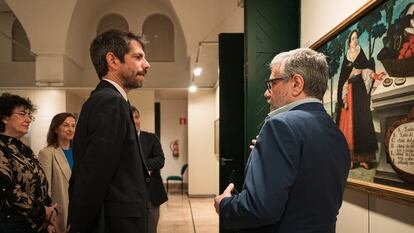
The Museum of Anthropology has the ambition, in the words of its director, Fernando Sáez, to become a space of “community participation and social mediation”. This translates into the transformation of the three floors of the institution not only through a new arrangement of the pieces, but with the intention of involving communities in “telling their stories”, just as the center turns 150 years old.
“Anthropology itself, in the course of its evolution, has developed and promoted theories with political and social interests that have legitimized a world order now under discussion,” says Sáez to situate the challenge faced by the museum he directs. The objective is for the visitor to ask himself all these questions when he enters the new permanent exhibition and, as far as possible, offer them the answers with the version of the original communities of different territories on topics such as “the plundering of natural resources, the hierarchization of people based on their ethnic traits, the question of the existence of race, the climate emergency and the restoration of narratives marginalized by the Western gaze”, according to the project.
Their challenge even goes as far as trying to shed light on one of the concerns that the CIS includes in its barometers and that the far right has made a pillar of its campaigns: migration. “Human beings have always moved,” he recalls.
“We want to remedy the present with social imagination workshops,” says Sáez, who has also been moving in this direction for months. The Anthropological Museum is the second with the largest number of human remains in Spain, which were removed in accordance with the Letter of commitment for the ethical treatment of human remains in state museums, of the Ministry of Culture.
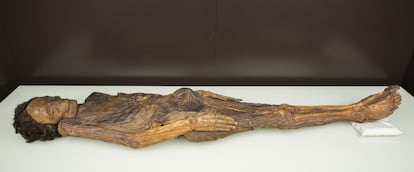
At the moment, neither is facing the return and restitution of the parts. “We don’t believe there are works of questionable origin,” says Sáez. Although the managers do not exclude possible requests and expect that, if they occur, these requests will be included and explained in the exhibitions. “There are ethical and legal claims and they need to be raised as part of the conversation, regardless of what happens next. We have taken the bull by the horns,” adds Gutiérrez.
It’s already happening with the Quimbaya Treasure, which will also be part of the new Museum of America. The collection of 122 pieces was claimed by the government of Gustavo Petro in 2024, but received no response from the Spanish authorities who always solved the case because they considered the work national heritage as it was a gift from Colombian president Carlos Holguín to Queen María Cristina of Habsburg-Lorraine.
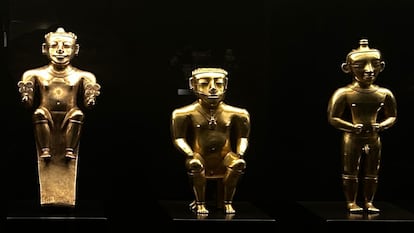
“All these are not problems of the past, which is why we have the social responsibility that contemporary museology requires,” the managers agree. To update these debates, the two museums will receive works of contemporary art acquired by the Ministry of Culture. “We have been buying pieces for months to fill the gaps, always according to the reasoned requests of the museums,” says Ángeles Albert, general director of Cultural Heritage and Fine Arts, who clarifies that a specific purchasing budget has not been allocated for these centres.
